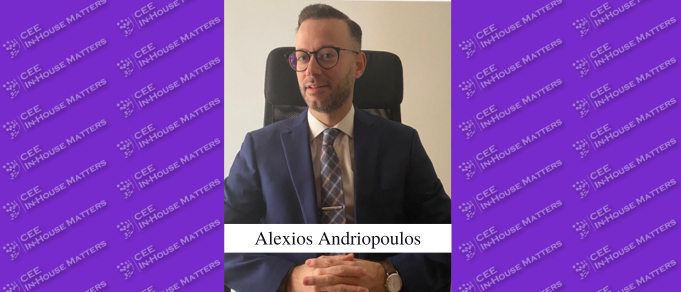Investment activity in Austria’s technology sector remained strong in 2022, despite the global economic downturn caused by the pandemic. Cerha Hempel Partner Christoph Reiter, Schoenherr Partner Thomas Kulnigg, and Dorda Managing Partner Axel Anderl talk about where the money is coming from, where it is going, and what can be expected for 2023.
Lay of the Land
“In the aftermath of increased performance during the peak of the COVID-19 pandemic, technology remains an attractive sector for investors despite a quite volatile economic situation,” begins Reiter. “What makes Austria special is the fact that it already managed to establish itself as one of the leading locations for quantum research, cybersecurity, and AI within the CEE region,” he continues. “This enables both start-ups and long-established enterprises to quickly access ground-breaking technology and highly trained personnel.” According to Reiter, around 35 companies in Austria provide advanced cybersecurity solutions for the public sector, critical infrastructure, industry, and enterprises, with an expected growth rate of six to nine percent in 2023 alone.
While Austria’s tech sector has been growing and developing over the years, the recent global downturn due to the war in Ukraine, increased uncertainty in the markets, and rising inflation and interest rate hikes could potentially impact the sector’s growth, according to Kulnigg. “Despite these challenges, the sector is still expected to perform well, given the favorable business environment, the general availability of funding (in particular for early-stage ventures), and the presence of a skilled and highly educated workforce combined with a rather high qualify of living,” he reports.
Chiming in, Anderl says that a “favorable business environment, highly skilled workforce, and supportive government policies have helped to create a thriving ecosystem for tech start-ups. In comparison to other CEE countries, Austria has a more established and mature tech sector, which has attracted significant investments from both local and international players.”
Where the Money Is Coming From
Reiter explains that investments in the local tech sector originate from both national and international sources and include retail and institutional investors alike. “Foreign investor groups dominate by measurement of financing volume and number, with only about one-third of investments originating from domestic investors,” he says, adding that this is mainly due to “the fact that there are currently hardly any venture capital investors in Austria who provide domestic start-ups with the funds required for scaling and internationalization. Austrian investors predominantly participate in early-stage investment rounds, creating a strong dependence on foreign investors, especially for larger financing rounds.”
“Investor capital is coming from a variety of sources, including venture capital firms, angel, and strategic investors,” Anderl adds. “Furthermore, family investment firms have been very active on the market in the past months. This is a trend spilling over from Germany. The increasing inflation rate makes it more attractive for investors to shift “old money” into riskier start-ups,” he explains. “There could still be a significant amount of investment activity in the sector, as investors look for opportunities to diversify their portfolios and take advantage of the relatively stable business environment in Austria,” Kulnigg says. Still, he feels that the outlook for 2023 “may be more cautious,” with a “potential slowdown in investment activity, in particular in later stage financing rounds, and a reduction in the number of M&A activities and exits, with a potential upside for fire sales.”
And Where It’s Going
“While consumer products nowadays only yield low margins due to intense competition, tech suppliers seem to be benefiting in particular from elevated demand in the more profitable B2B sector,” Reiter says. Increasingly comprehensive digitalization of businesses, according to him, “raises demand for more extensive and complex software solutions, which are often accompanied by corresponding support services.” As a result, companies are focusing on acquiring knowledge and key personnel from third-party providers focusing on “key areas such as cloud infrastructure and security expertise,” Reiter stresses.
“Looking ahead, we expect companies to further pursue their digital transformation projects despite high inflation and an overall volatile economic situation, albeit at a slower pace,” he posits. “This is primarily due to the fact that precisely those projects are promising to bring about the necessary productivity gains, both for the current crisis management as well as in the future.”
Founders Focus
Kulnigg, for one, feels that many of the start-ups that have performed well may “focus on consolidating their operations and maintaining their existing businesses, rather than expanding and taking on new risks.” While there may still be several exits, he feels that these are more likely to be “selective and cautious in light of the current global economic conditions.” Reflecting on what founders choose, Kulnigg says that some are reinvesting funds into their current companies to support growth, while others are diversifying their portfolios by investing in other start-ups or venture capital funds, or starting new projects altogether.
“Companies that have performed positively in the past are focusing their funds on further innovation and growth,” Anderl adds. “There have been some lucrative exits, which in turn attract venture capital firms and private investors from all over the world. After successful exits, many founders become business angels and invest in other start-ups to help drive further growth,” he explains. Such cyclical movement of funds, with investment capital flowing back into the start-up ecosystem to support new companies and new ideas, “shows that the Austrian tech-sector is not just a source of innovation and growth, but also a hub for entrepreneurship and reinvestment,” Anderl stresses.
Will It Continue?
As digital transformation continues to sweep across businesses, the Austrian tech sector is poised for growth and innovation as the year goes on. “In our opinion, the digital transformation will continue offering long-term growth impulses and allow for extensive opportunities for innovation,” says Reiter. “At the beginning of 2024, this will especially be visible in subsectors such as digital media, social media shopping and e-commerce, electrification and autonomy, AI, cloud services, cybersecurity, blockchain, and data processing.”
Anderl agrees with Reiter that the outlook is “clearly positive. Companies that have established themselves as leaders in their respective industries will likely continue to grow and expand, while new start-ups will emerge to challenge the established players and drive further innovation.” He also believes that the sector stands to benefit even further, as “more international investors discover the opportunities in Austria, and as more tech companies choose to establish operations in the country.”
Finally, Kulnigg, being cautious on account of the current geopolitical context, believes that the sector is expected to continue its growth trajectory, albeit at a slower pace. “There may be a reduction in investment activity and the number of (successful) exits, but the sector is still likely to remain vibrant and innovative,” he concludes.
This article was originally published in Issue 10.2 of the CEE Legal Matters Magazine. If you would like to receive a hard copy of the magazine, you can subscribe here.






















